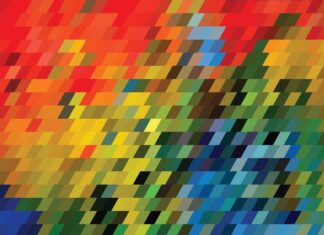Mediapipe is a powerful and versatile open-source framework developed by Google that facilitates the building of perceptual applications for various platforms, including desktop, mobile, and embedded devices. With its wide range of pre-built components and customizable pipelines, Mediapipe empowers developers to create real-time multimedia processing applications with ease. It has gained significant popularity in the computer vision and machine learning communities due to its efficiency, flexibility, and ability to process diverse types of data, such as images, videos, and even 3D point clouds.
At the core of Mediapipe lies a graph-based processing paradigm, where developers construct pipelines by connecting modular processing elements, known as “calculators.” These calculators perform specific tasks, such as face detection, pose estimation, hand tracking, and object recognition, among many others. The flexible nature of this graph-based architecture allows developers to seamlessly combine and modify these calculators to cater to their unique application requirements. Furthermore, by leveraging the power of modern GPUs and other hardware accelerators, Mediapipe efficiently harnesses the computing resources to achieve real-time processing speeds, making it ideal for interactive applications.
One of the primary advantages of Mediapipe is its extensive support for various input modalities. Whether it’s processing data from standard cameras, depth sensors, or even custom-designed hardware, Mediapipe offers a unified interface to handle different input sources effectively. This versatility enables developers to build applications that can adapt to diverse scenarios, from smartphone cameras to advanced depth-sensing devices.
Mediapipe also shines in the field of real-time hand tracking, which has numerous applications in augmented reality, virtual reality, sign language recognition, and interactive gaming. The framework provides a pre-built hand tracking solution that accurately detects and tracks hand gestures in real-time, enabling seamless and intuitive interaction between users and digital content.
Another remarkable feature of Mediapipe is its support for pose estimation, which has wide-ranging applications in fitness and health monitoring, sports analysis, and human-computer interaction. The framework’s pose estimation pipeline can accurately detect human body keypoints and infer their spatial relationships, allowing for detailed analysis of body movements and postures.
Facial recognition and tracking are essential components of many multimedia applications, and Mediapipe offers robust solutions for these tasks as well. Developers can easily integrate the framework’s face detection and facial landmark tracking capabilities to enable exciting features such as virtual makeup, emotion analysis, and avatar creation.
With the rapid advancements in 3D sensing technologies, Mediapipe has also adapted to support 3D perception tasks. By utilizing point cloud data, the framework enables developers to build applications for augmented reality, 3D scene reconstruction, and object recognition in 3D space.
Mediapipe’s versatility extends to the support of custom model inference, allowing developers to integrate their own machine learning models into the pipeline effortlessly. Whether it’s a custom object detection model or a unique neural network architecture, Mediapipe provides the necessary tools and interfaces to seamlessly incorporate these models into the graph-based processing pipeline.
Beyond its diverse range of pre-built components and capabilities, Mediapipe fosters an active and collaborative community of developers and researchers. This community regularly contributes new calculators, pipeline examples, and best practices, making it easier for newcomers to get started and seasoned developers to expand their expertise.
Mediapipe is a game-changing open-source framework that empowers developers to build real-time perceptual applications for a variety of platforms. Its graph-based processing paradigm, support for multiple input modalities, and extensive pre-built components for tasks like hand tracking, pose estimation, facial recognition, and 3D perception, make it a highly versatile and efficient toolset. Moreover, its ability to integrate custom machine learning models and the vibrant developer community further enhances its appeal. As computer vision and machine learning continue to shape the future of technology, Mediapipe remains at the forefront, driving innovation and enabling the creation of interactive and intelligent applications across diverse domains.
Beyond its diverse range of pre-built components and capabilities, Mediapipe fosters an active and collaborative community of developers and researchers. This community regularly contributes new calculators, pipeline examples, and best practices, making it easier for newcomers to get started and seasoned developers to expand their expertise. With each contribution, the framework becomes more powerful and adaptable, addressing an ever-growing array of applications and use cases. The openness and inclusivity of the Mediapipe community create an environment where knowledge-sharing and continuous improvement are valued, ensuring that the framework remains relevant and cutting-edge in the fast-paced world of computer vision and machine learning.
Mediapipe’s success and widespread adoption can be attributed to several key factors. Firstly, the extensive documentation and tutorials provided by Google enable developers to grasp the framework’s concepts and functionality quickly. This accessibility lowers the entry barrier for developers interested in working with complex computer vision tasks, thus encouraging broader participation and innovation. Additionally, Mediapipe’s integration with popular programming languages such as C++, Python, and Java ensures that developers can utilize their preferred language, enhancing overall productivity and ease of development.
Another crucial aspect of Mediapipe is its performance optimization and hardware acceleration. The framework has been carefully engineered to leverage the power of modern GPUs, CPUs, and other hardware accelerators efficiently. This design enables Mediapipe to achieve real-time or near-real-time processing speeds, making it suitable for latency-critical applications like augmented reality filters, real-time tracking systems, and interactive multimedia experiences. By effectively utilizing hardware resources, developers can unlock the full potential of Mediapipe and deliver high-performance applications to end-users.
As Mediapipe continues to evolve, the Google team and the community continuously explore new research and engineering advances in computer vision and machine learning. They integrate cutting-edge algorithms and models into the framework, ensuring that developers have access to the latest state-of-the-art technologies. Additionally, the Mediapipe team actively engages with the community to solicit feedback, identify potential improvements, and address issues promptly, creating a virtuous cycle of development and refinement.
Mediapipe’s impact extends beyond academia and individual projects. It has been widely adopted by industry leaders and startups alike, finding applications in areas as diverse as healthcare, entertainment, robotics, education, and more. This widespread adoption further reinforces Mediapipe’s position as a versatile and industry-ready solution for real-world problems.
In summary, Mediapipe is an open-source framework that has revolutionized the development of perceptual applications in computer vision and machine learning. Its graph-based processing paradigm, extensive pre-built components, support for multiple input modalities, and integration of custom machine learning models make it a powerful and flexible toolkit for developers. With a vibrant and collaborative community, robust performance optimization, and continuous integration of cutting-edge research, Mediapipe is well-positioned to remain at the forefront of multimedia processing and real-time perceptual computing for years to come. As technology advances and new challenges emerge, Mediapipe will continue to play a vital role in empowering developers to create innovative and immersive applications that shape the future of human-computer interaction and computer vision-based solutions.


















